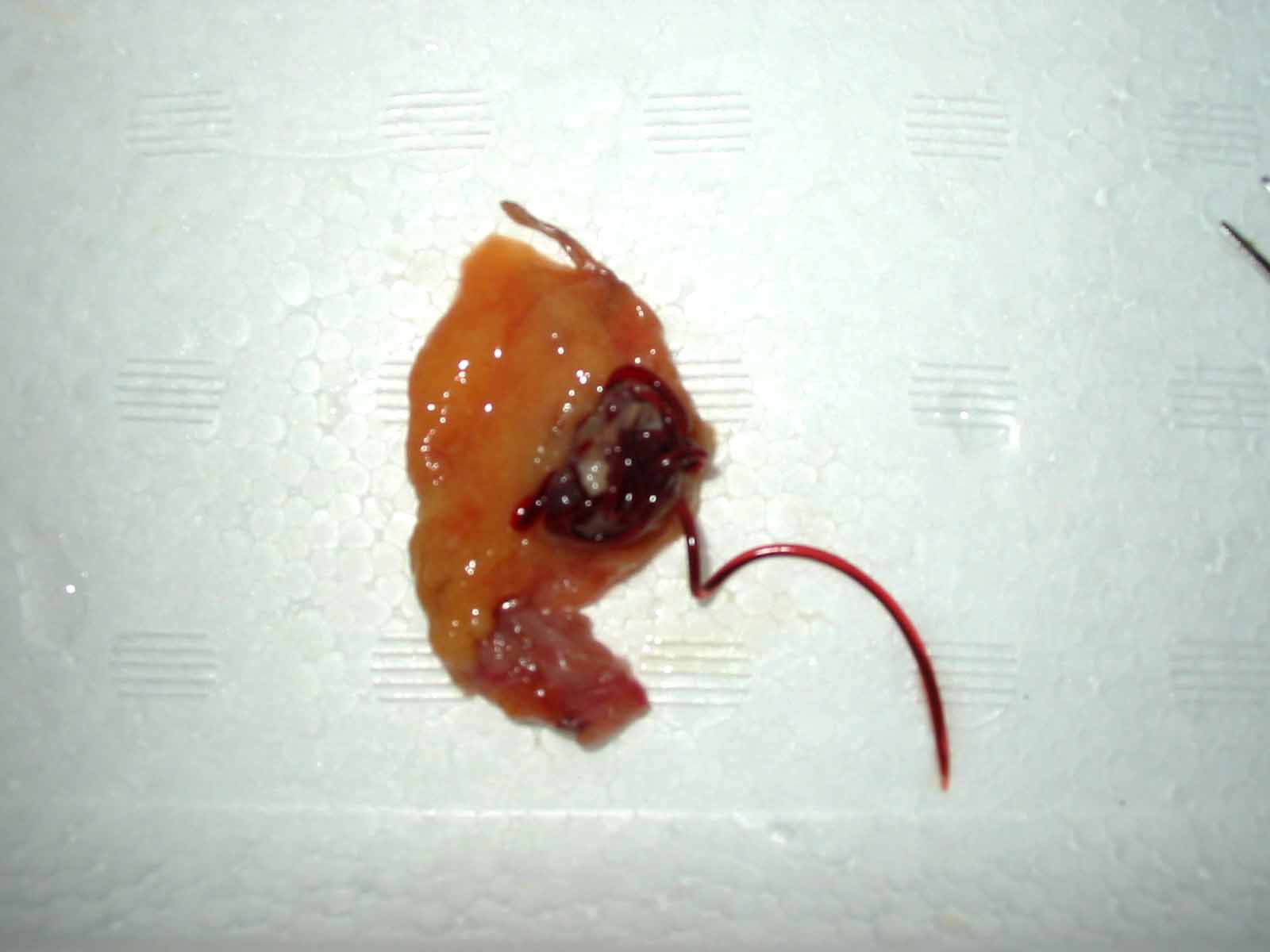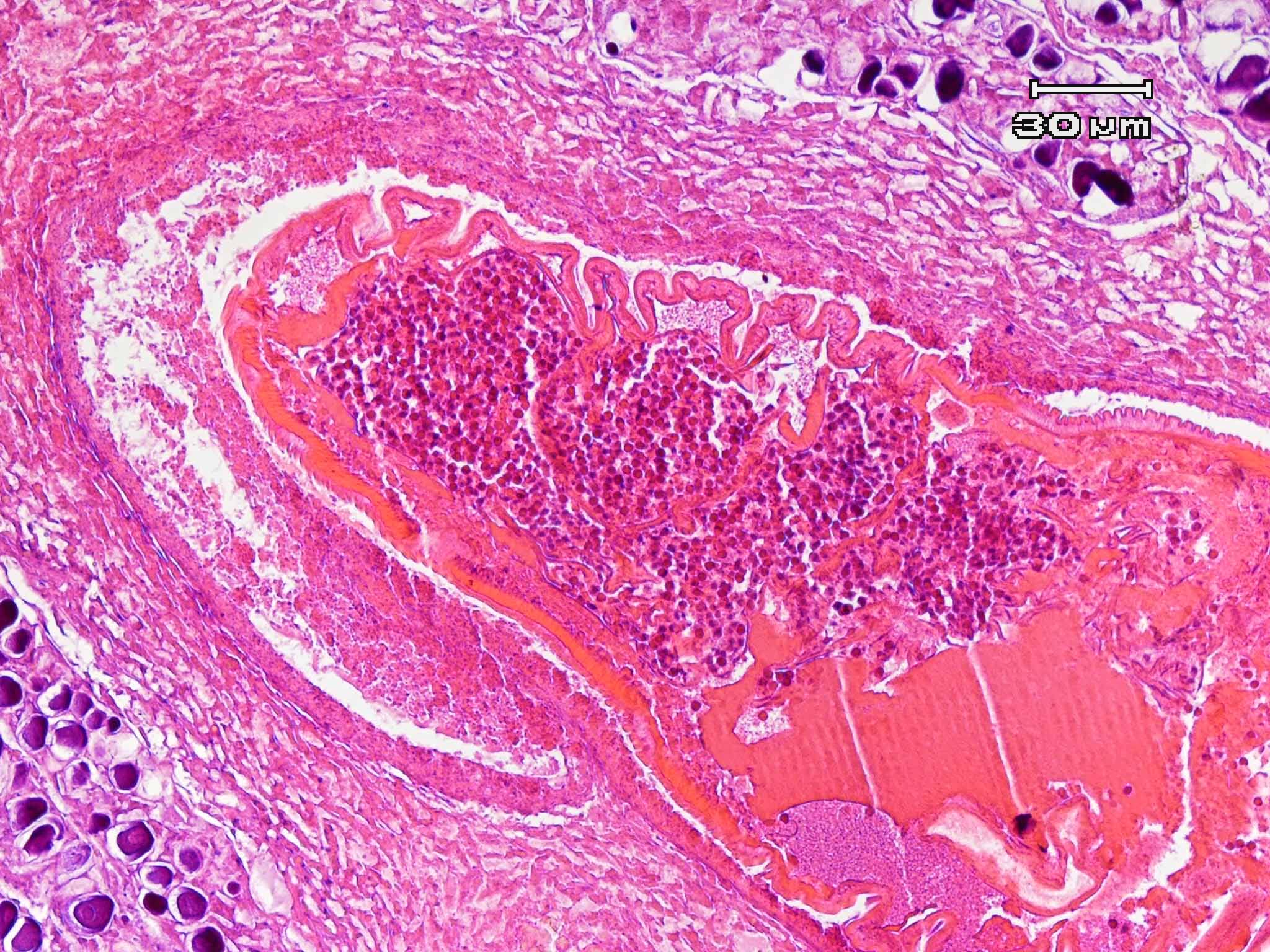
| Parasite | Philometra sp. |
|---|---|
| Taxonomy | Nematoda, Secernentea, Camallanida |
| Host | Red sea bream (Pagrus major) |
| Infection site | Gonad |
| Clinical sign | Many reddish worms are observed in the gonad (Figs. 1). |
| Parasitology | Only female (length: >20 cm) is visually observed. Life cycle is not elucidated. Fish probably get infection by ingestion of the intermediate host e.g., small crustaceans, and the parasite may migrates from the digestive tract to the gonad where it matures and spawns (Ogawa, 2004). Thereafter, the adult females die due to the host reactions and leave their remnants in host’s gonad. Although this parasite was originally described as P. lateolabracis, the morphological and molecular studies demonstrated that the one from red sea bream is different species (Quiazon et al., 2006). |
| Pathology | The parasite dies after spawning due to the strong host reaction. |
| Health hazard | Since this parasite is not infectious to human, it is harmless in food hygiene. |
| Diagnosis | Check the parasite in the gonad. |
| Other information | It takes 2 years for this parasite to mature. Therefore, it is possible that a recent decrease of this parasitic disease in cultured red sea bream is caused by shortened culture period (less than 2 years) in these days. |
| References | Ogawa, K. (2004): Metazoan
diseases. Infectious and parasitic diseases of fish and shellfish.
(Wakabayashi, H. and K. Muroga), Koseisha
koseikaku, pp. 381-405. (In Japanese) Quiazon, K. M., K. Ogawa and T. Yoshinaga (2006): Taxonomical studies on philometrid nematodes infecting marine fishes of Japan. Abstract of the meeting of the Japanese Society of Fisheries Science in 2006, p. 88. |


Fig. 2. Inflammatory responces to the dead worm.
Fig. 1. Philometra sp. parasitizing the gonad of red sea bream
(Photos by Karl Marx Quiazon)